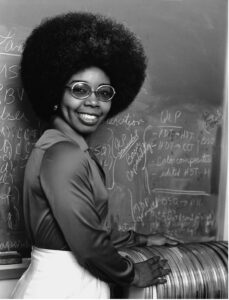
Figure 1: The Unruh effect states that for an accelerating observer, the temperature of empty space rises, causing the appearance of a swarm of particles and radiation. Current technology does not allow for the direct confirmation of this effect, for the phenomenon only becomes apparent at speeds close to light. However, a team of researchers believe they can confirm its existence utilizing a quantum simulation involving a Bose-Einstein condensate and sound particles.
Source: Flickr
Albert Einstein’s papers on the theory of relativity are some of the most influential scientific papers to date. One of the overarching principles he proposes is that many forms of measurement are relative, dependent on an observer’s motion. The ticking of a clock, the length of an object, the wavelength of a ray of light—there are no explicit universal measures of these properties since they change depending on how fast an observer is moving (Norton, 2013). In 1976, W.G. Unruh described a phenomenon that would expand upon Einstein’s theories of relativity. The Unruh effect states that from the point of view of an accelerating observer, empty space, which would otherwise be totally blank for a non-accelerating observer, becomes a swarm of particles and radiation, taking on a temperature proportional to the observer’s acceleration. This phenomenon was only an abstract theory; it would be impossible to confirm this theory via direct observation because the observer would need to accelerate to speeds comparable to light, which is not possible with current technology (Fulling and Matsas, 2014). However, a research team led by the University of Nottingham in collaboration with the University of British Columbia and Vienna University of Technology has proposed an experiment that could detect this phenomenon using sound particles (“Scientists make sound-waves,” 2020).
The researchers proposed that instead of studying empty space, they could create a two-dimensional cloud of super cold atoms, known as a Bose-Einstein condensate, and study the sound particles, or phonons, that become audible to an accelerated observer. Just as particles can be viewed as “disturbances” in empty space, the Bose-Einstein condensate also experiences disturbances in the form of irregularities (the phonons) that spread out in waves. By focusing a laser beam on the condensate and guiding it in accelerated motion, it is possible that the observer could detect sound disturbances that would not exist for a stationary observer. Because the laws of physics are consistent in different quantum systems, such an experiment would be a perfect way to simulate the effect in empty space. In fact, such so-called quantum simulations were also used in the study of black holes (“Scientists make sound-waves,” 2020).
Preliminary planning at the university is already underway to conduct a version of this experiment utilizing superfluid helium. However, it seems that this will be a very complex and arduous feat. Jorg Schmiedmayer from Vienna University of Technology explains that although “it would be a wonderful way to learn about an important effect that was previously thought to be practically unobservable,” it is a time-consuming project with many “technical hurdles for [them] to overcome.” Along with the victory of detecting the undetectable, the experiment also has implications in the field of astrophysics. Because the Unruh effect is closely related to Hawking radiation, the emission of particles by a black hole due to extreme gravitational effects, the experiment would offer insights into the behavior of black holes. Furthermore, the project would also advance the studies of virtual particles, particles that randomly appear out of energy due to the equivalence principle. From multiple perspectives, this experiment would be a great stride in theoretical physics (“Scientists make sound-waves,” 2020; Gooding et al., 2020).
References
Norton, J. D. (2013, February 10). “Special Theory of Relativity: The Principles.” Einstein for Everyone. Retrieved November 25, 2020 from http://www.pitt.edu/~jdnorton/teaching/HPS_0410/chapters/Special_relativity_principles/
Fulling, S. A. and Matsas, G. E. A. (2014, October 10). “Unruh effect.” Scholarpedia. Retrieved November 25, 2020 from http://www.scholarpedia.org/article/Unruh_effect#Wikipedia_references.
ScienceDaily. (2020, November 23). “Scientists make sound-waves from a quantum vacuum at the Black Hole laboratory.” ScienceDaily. Retrieved November 25, 2020 from https://www.sciencedaily.com/releases/2020/11/201123100943.htm.
Sutter, P. (2016, August 22). “‘Virtual’ Particles Are Just ‘Wiggles’ in the Electromagnetic Field.” LiveScience. Retrieved November 25, 2020 from https://www.livescience.com/55833-what-are-virtual-particles.html.
Gooding C., Biermann, S., Erne, S., Louko, J., Unruh, W.G., Schmiedmayer, J. and Weinfurtner, S. (2020, November 20). “Interferometric Unruh Detectors for Bose-Einstein Condensates.” Physical Review Letters. Retrieved November 25, 2020 from https://journals.aps.org/prl/abstract/10.1103/PhysRevLett.125.213603.
Related Posts
Meet Valerie Thomas, The Scientist Whose Computer Code Let NASA See the Earth From Space
Figure 1: NASA scientist Valerie Thomas stands next to a...
Read MoreNew ‘Drugless’ Approach to Killing Cancer Cells Shows Promise
Figure 1: Abstract Molecular Model Source: ShutterStock Researchers at Nanyang...
Read MorePossible Biosignature for Life Discovered on Venus
Figure 1: This is an image of Venus with its...
Read MoreSai Rayasam




Comments are closed.